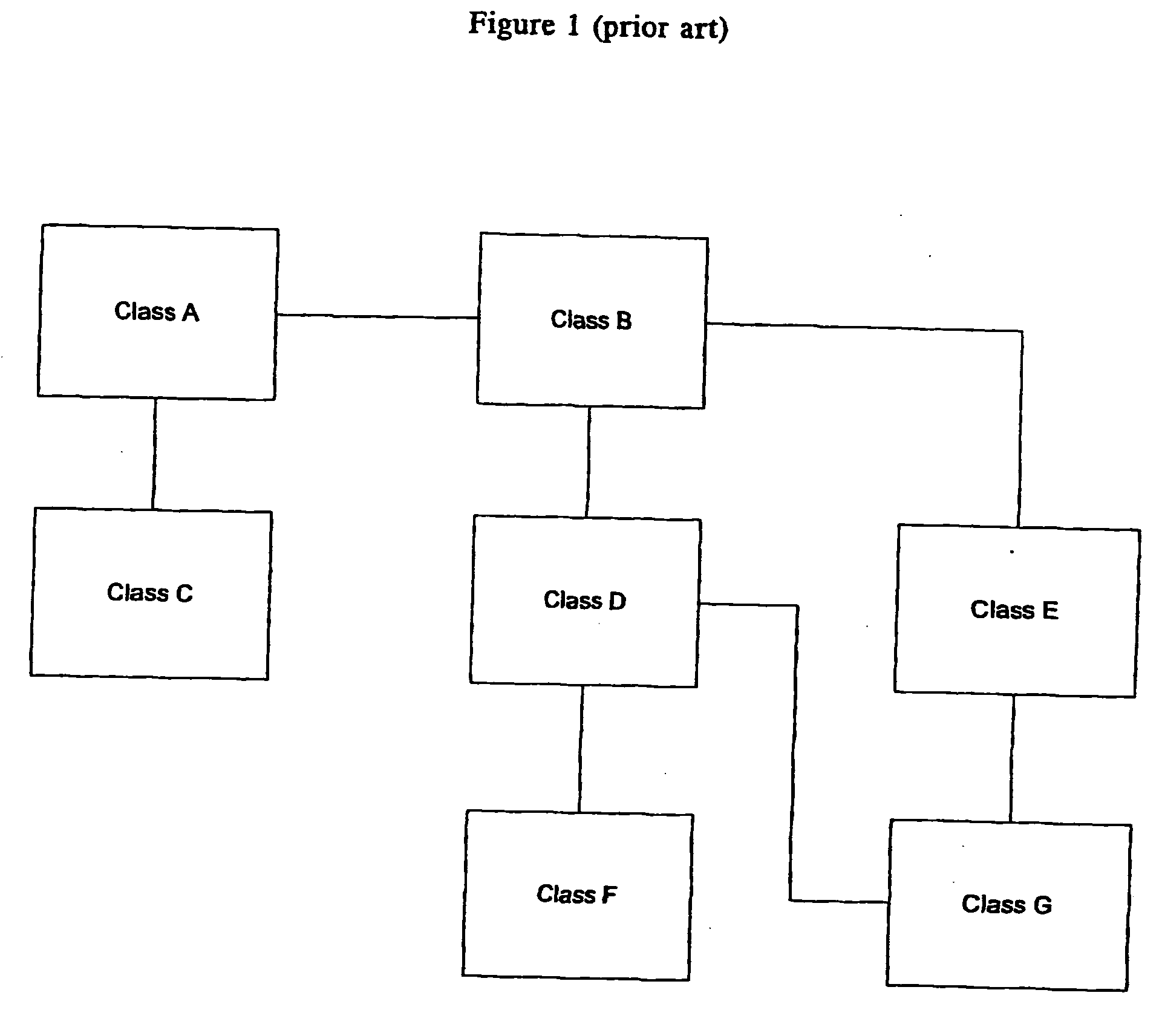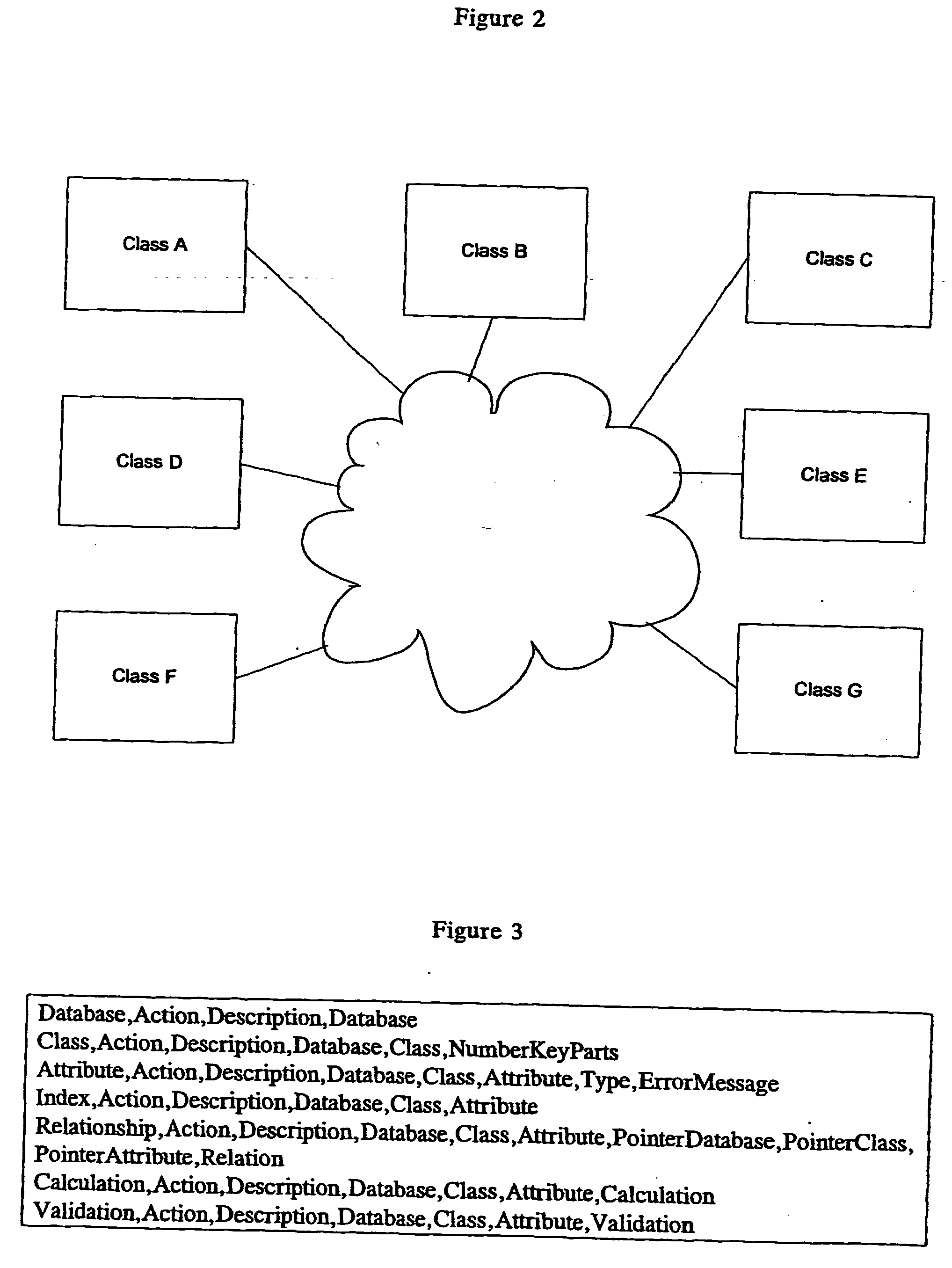Developing and maintaining customised computer information systems
a computer information system and customised technology, applied in the field of developing and maintaining customised computer information systems, can solve the problems of not performing some functions in the best way, affecting the efficiency of the system, and taking a relatively long time to implement and maintain. , to achieve the effect of less tim
- Summary
- Abstract
- Description
- Claims
- Application Information
AI Technical Summary
Benefits of technology
Problems solved by technology
Method used
Image
Examples
Embodiment Construction
[0122] The present invention provides an improved method of and new computer software for designing, developing and / or maintaining customised information systems.
I. PREFERRED EMBODIMENT
[0123] In one preferred embodiment of the present invention, the present invention alters the basic five step method by which a customised information system is presently created. Instead of the basic five step method discussed previously, the present invention requires the use of only three steps to provide a method by which a customised information system may be developed. These three steps, with a brief description of each step, are:
[0124] 1. Definition (Define the information that the industry or organisation uses; in the format of FIG. 3, Data Definition Format, and process that information through the procedure InfoBase.Create)
[0125] 2. Testing (Confirm that the industry or organisation for which the information system is being developed is satisfied that the resulting information system can ful...
PUM
 Login to View More
Login to View More Abstract
Description
Claims
Application Information
 Login to View More
Login to View More - R&D
- Intellectual Property
- Life Sciences
- Materials
- Tech Scout
- Unparalleled Data Quality
- Higher Quality Content
- 60% Fewer Hallucinations
Browse by: Latest US Patents, China's latest patents, Technical Efficacy Thesaurus, Application Domain, Technology Topic, Popular Technical Reports.
© 2025 PatSnap. All rights reserved.Legal|Privacy policy|Modern Slavery Act Transparency Statement|Sitemap|About US| Contact US: help@patsnap.com



